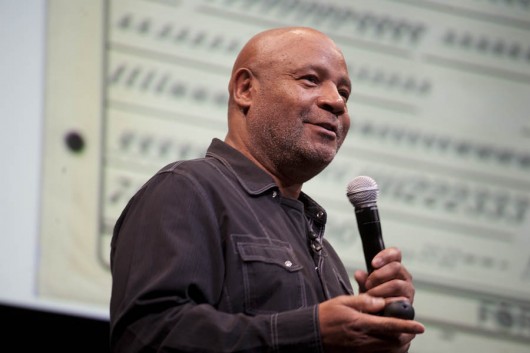As an example, one of his illustrations dealt with the subject of African-Americans fighting the very controversial Vietnam War. In this illustration, a pig — a common representation of the U.S. government, or government owned entities — dressed as Uncle Sam, is seen winding up toy soldiers (the African-American soldiers) and sending them off to Vietnam. The next scene is what happens when the African-American soldiers realize that the war they’re engaged in isn’t their war, the United State’s war. You can tell the African-American soldiers are a bit disgruntled, because the scene below it is of the toy soldiers chasing off the pig version of Uncle Sam.
Emory’s presentation makes it abundantly clear he’s not behind any political party’s agenda. His art’s message is of a progressive thinking, but it transcends both parties, and the government in general. For instance, one of his cover designs, The Black Scholar magazine, was of a donkey and an elephant — symbols of the two major political parties in America — eating from the same trough. The trough, of course, represents a resource, from which both parties are equally interested in, and are equally involved in abusing.
Throughout the years, he’s designed magazine covers, flyers, album covers, mailers, etc, that have centered around political satire, calling out left and right-wing leaders when they’ve strayed from their duties of serving the people, and not their personal interests. Most recently, his work has criticized the Obama administration, for their hypocritical views on peace, and the false idolization inflicted on the general public. One of his designs calls Obama a “Nobel Fraud” — for those of you that don’t know, Obama won the Nobel Peace Prize — and justifies that statement by showing an illustration of Obama signing into law a “Kill List” — a list of public enemies the government has set out to eliminate.
Emory Douglas
Artist (San Francisco)
The presentation was short, sweet, and intensely passionate. Whether you agree with his point of view — the representation of government figures as pigs, the catchy sayings (“Health is Wealth”, “Man Made Money, Money Drove Man Mad”), the blatant opposition of the privatization of our prison system — or not, his confidence and humanity are sure to inspire even the most opposing of us.






















